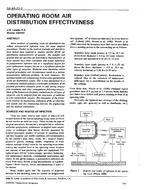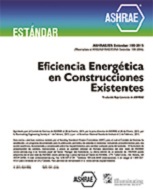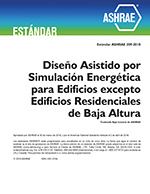Description
Illustrates in a diagram and explains sources and routes of infection in the operating theatre. Points out that some methods of operating theatre air distribution can reduce postoperative infection routes for some surgical procedures but studies in medical journals and elsewhere have lacked data required for the analysis of specific HVAC air distribution characteristics of systems. Correlations have been established for joint replacement surgery but not to a significant extent for other types of surgery. States medicine must determine which surgical procedures and circumstances result in a serious postoperative infection problem. In such instances, the optimum health care solution may involve some optimisation of the air distribution system. Discusses some HVAC system comparisons and illustrates their air flow schemes in diagrams. Discusses design codes and guidelines. States a significant research effort is required to test and evaluate the engineering performance and effectiveness of a variety of operating theatre air distribution systems and to determine the optimum air distribution system for each surgical procedure. As medical treatments and other factors change over time for a particular type of surgery, the relative importance and optimum design characteristics of the air distribution system might also change. Most of the framework for future evaluations for all types of surgeries can be adapted from the experience in joint replacement surgery.
KEYWORDS: Hospitals, operating theatres, air flow, air movement, air distribution, health, hazards, bacteria, optimum.
Citation: Symposium, ASHRAE Trans., 1993, vol.99, part 2, paper number DE-93-1-1, 429-439, 7 figs, 2 tabs, refs.
Product Details
- Published:
- 1993
- File Size:
- 1 file , 1.4 MB
- Product Code(s):
- D-17592




